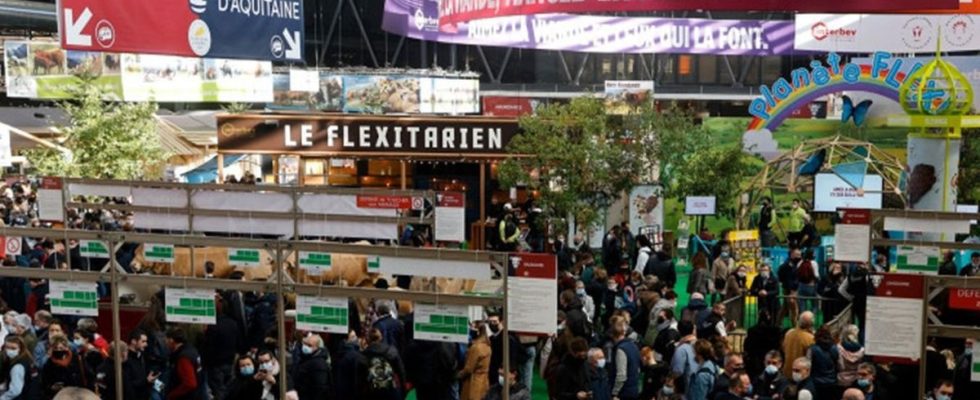Published on
Updated
Reading 3 mins.
The Agricultural Show, an annual celebration of the “farm France”, opens on Saturday in a landscape upset by the war in Ukraine, inflation and the climate.
Emmanuel Macron is expected first thing Saturday to inaugurate the event which has occupied the Porte de Versailles exhibition center, in the south of Paris, every year since 1964 (except for 2021 due to the Covid-19 pandemic ).
After a year of war and a desperately dry summer, one of the president’s “key axes of movement” will be to “strengthen the sovereignty” of France, by supporting “an agriculture which produces to feed the French and which adapts to new environmental issues”, we said Wednesday at the Elysee.
Three priorities are essential: better water management — “how to irrigate better”, “use more drought-resistant varieties” and reuse more wastewater —; a “new approach to the use of phytosanitary products”, in particular to support farmers towards fewer pesticides; and finally launch a reflection on the breeding of tomorrow, integrating animal well-being.
In 2022, the show opened almost the day after Russia invaded Ukraine and the head of state made an express appearance – one hour and a half compared to twelve hours usually.
It was in the aisles of the show that the notion of “food sovereignty” had already been highlighted, because of the risks weighing on the world’s supply of wheat and other seeds.
Since then, France has a Ministry of Agriculture and Food Sovereignty and the majority agricultural union FNSEA does not miss an opportunity to hammer home that farmers must have the means to produce in quantity, with fewer environmental constraints.
On February 8, the union orchestrated a show of force by parading more than 500 tractors in Paris to denounce the government’s backpedaling on neonicotinoid insecticides, which sugar beet growers are now permanently deprived of.
NO to diets, YES to WW!
“Helpful Posts”
“This is the first time that we are going to hold a show with the effects of a war on the European continent”observes the president of the event Jean-Luc Poulain.
The conflict, which involves two agricultural giants, has caused the prices of livestock feed to jump, but also the energy used to heat the buildings that house them, to dry corn, to refrigerate apples or roots. chicory…
The war has also revived tensions over purchasing power, with food prices up 12% over one year.
Inflation is not about to subside. The show also coincides with the closing on March 1 of the annual negotiations between supermarkets and their suppliers.
Alarmed by the decline in certain national productions (beef, pork, vegetables) and the concomitant increase in imports, the president of the FNSEA, Christiane Lambert, said she refused “the inevitability of decline”.
“Talking about food sovereignty is good, but taking the decisions that allow it to be achieved and that above all allow us to stop regressing is much better”she continued.
While water has become a crucial issue in a dry France this winter, the Minister of Agriculture stressed on Wednesday that 60 new agricultural hydraulic works projects would be “commissioned” by June. He also hinted that the president would address the issue of “budgetary resources” to be mobilized to finance the construction of water reserves.
The show, which had received more than 500,000 visitors last year, is “the catalyst for the hopes and problems of agriculture”, summarizes Arnaud Lemoine, director of the National Center for Agricultural Exhibitions and Competitions (Ceneca), at the origin of the event.
Annual rite, the muse of the 59th show, the Ovalie cow, of Salers breed and mahogany dress, will arrive Friday Porte de Versailles accompanied by her twins, Utopia and Utopia, born in January.
Alongside them, nearly 4,000 animals – sheep, pigs, horses, rabbits… – will watch the crowds from their straw litter. But the hens will miss the call, confined this time again because of the bird flu.
